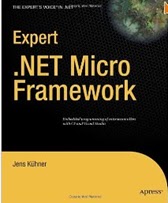Micro Processor
and Micro Controller:
1. Getting Started
What
do I need to know to get started with embedded development? Who should learn
Embedded Development? Why should I learn Embedded Programming? These are quite
simple and straight forward questions. Students, Professionals, hobbyists or
anyone can learn embedded programming and there is no restriction. If you have
an experience of high level programming, then u would be comfortable with the
embedded development and don’t worry if you don’t even written any kind of
computer program till date.
What is an Embedded System?
An
embedded system is a computer system designed for specific control
functions within a larger system, often with real-time computing constraints.
It is embedded as part of a complete device often including hardware and
mechanical parts. By contrast, a general-purpose computer, such as a personal
computer (PC), is designed to be flexible and to meet a wide range of end-user
needs. Embedded systems control many devices in common use today
Applications
of Embedded Systems:
·
Industrial Automation Systems.
·
Security Systems.
·
Military and aerospace embedded software
applications.
·
Medical electronics technology.
·
Communications applications.
·
Electronics applications and consumer devices.
·
Industrial automation and process control
software.
And
the list goes on……………………..
2. Languages and Tools
The
basic core elements of developing an Embedded System include a compiler,
debugger and an assembler (as just like in any other development environment).
You need to have the following tools to get started with the development.
Languages: c, 8085/8086 assembly
language programming.
Emulator: Keil compiler or any other compiler/ emulator
which you feel comfortable with and a
Development Board: There are
wide ranges of development boards available in the market, you can choose one. Some of most popular boards
are shown here.
3. Development Board’s.
MCB900 Evaluation Board
M1AFS-EMBEDDED-KIT
4. Online Resources
The following sites provide
you with the required documentation, programming model and instruction set
details.
5. Discussion Forums
6. EBooks
Assembly Language Step-By-Step by
Jeff
Duntemann
|
Professional Assembly Language by
Richard Blum
|
7. Projects
Microsoft Development
Network:
Enter the new world of embedded programming. The development frameworks and tools
provided by Microsoft. In this section
we will see the latest products released by the Microsoft for the Embedded
Development.
Windows Embedded Compact 7 (CE) |
Windows Embedded Standard 7 (XPE)
|
.Net
Micro Framework
|
Windows Embedded Standard 7 delivers the power, familiarity, and
reliability of the Windows 7 operating system in a componentized form for
developers to create advanced commercial and consumer devices running
thousands of existing Windows applications and drivers.
|
Windows Embedded Compact is the evolution of Windows Embedded CE.
Compact is a componentized, real-time operating system used to create a wide
range of small footprint enterprise and consumer devices.
|
The .NET Micro Framework is .NET for small and resource constrained
devices. It offers a complete and innovative development and execution
environment that brings the productivity of modern computing tools to this
class of devices
|
Languages and Tools:
Languages:
c#(c sharp).
Tools:
Visual Studio IDE.
Environmental set up:
Download the required software’s from the below links:
Download the required software’s from the below links:
Requirements
for Embedded Compact 7:
Requirements
for Embedded Standard 7:
Requirements
for .Net
Micro Framework:
Development Board’s:
EBooks:
Expert .NET Micro Framework by
Jens Kühner
|
Pro Windows Embedded Compact 7 by
Abraham
Kcholi
|
Professional Microsoft Windows Embedded CE 6.0 by Samuel
Phung
|
Windows Embedded CE 6.0 Fundamentals by
Stanislav Pavlov and Pavel Belevsky
|
Professional's Guide to Windows® Embedded Standard 7 by Sean D.
Liming
|









This comment has been removed by a blog administrator.
ReplyDelete